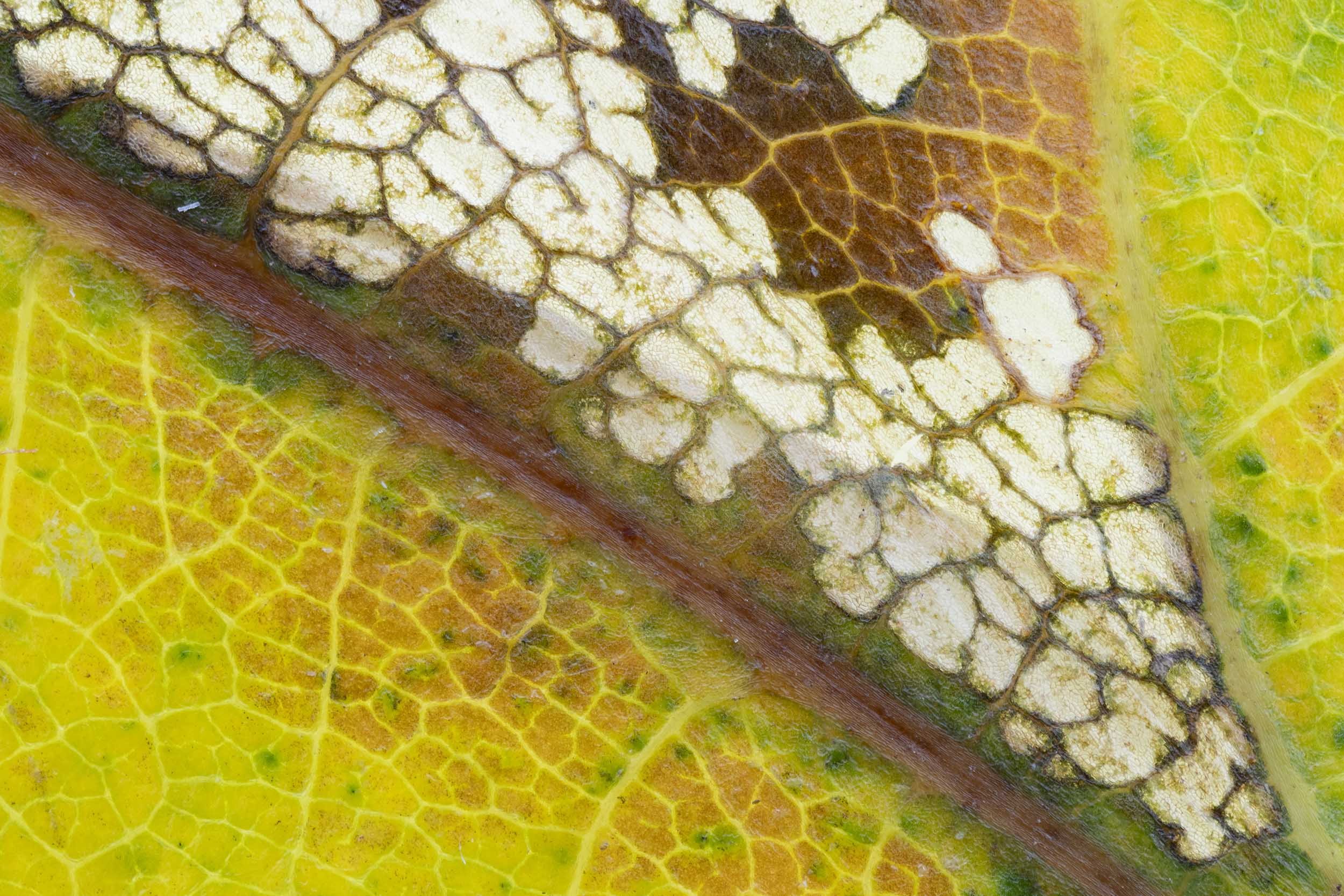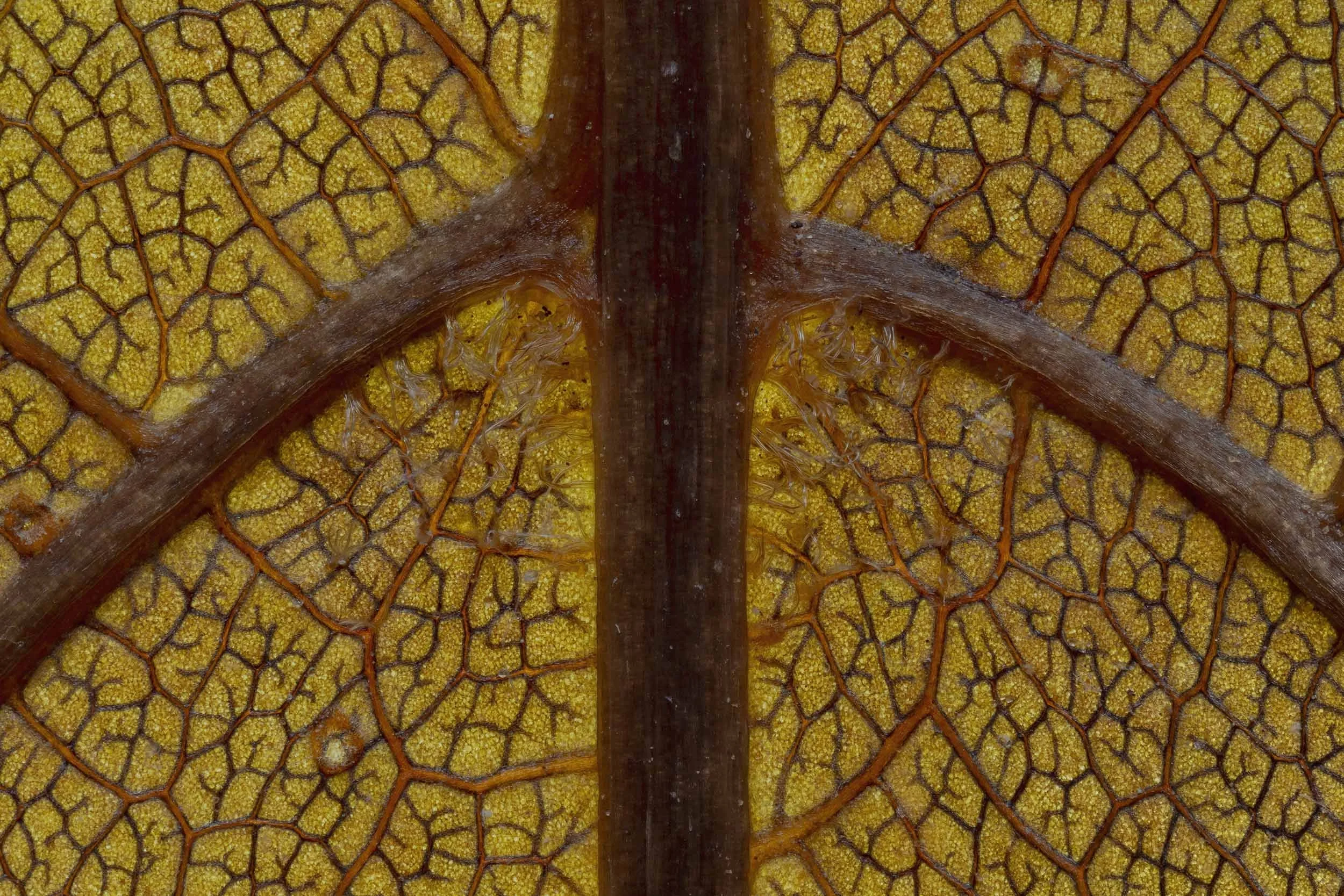Leaf Studies
Walnut Leaf
During the winter, with a lack of invertebrates around but with a persistent hankering to use my macro lens, I decided to photograph some leaves in order to scratch that itch.
I found some leaves that I thought might be interesting to look at close up and went about creating a rudimentary improvised studio to photograph them in.
I backlit the leaves in order to bring out all the vein details. It almost gives an x-ray looking view, where the light appears to bring out the internal structures of the leaf that aren’t visible otherwise.
Acer Leaf
Oak Leaf
One of the downsides to back lighting the leaves is that by gaining this extra detail you lose their surface texture which can flatten the image. In order to combat this I also used an on camera flash, with a diffuser, set to a low power, in order to fill in some of the surface detail. There was an element of trial and error in order to bring in enough light to do that but not too much as to counteract the back lighting. It worked to varying degrees depending on the leaf but overall I was quite happy with the balance. Hopefully the final shots have that identifiable leaf texture but with the heightened colours and detail from the back lighting producing a different aesthetic.
Focus stacking was always going to be on the agenda even on something as seemingly flat as a leaf. At the kind of magnifications I would be shooting at, even the jump in depth from a vein to the leaf below appears substantial. I wanted to try to reduce the time spent processing the stack by pressing the leaves for a few days prior to photographing. Even then the number of shots per focus bracket varied from between 30 to 100 so they still ended up being pretty deep stacks in some cases.
Poinsettia leaf
Poinsettia leaf
The best part about the whole process was moving the leaf around, experimenting with framing and then choosing the compositions to capture. I really enjoyed treating these images as fine art pieces, looking at the structures within each leaf and utilising straight edges, symmetry and balance with each composition. Where possible, I wanted to be in complete control over these elements and leave nothing to chance.
One of my favourites to photograph was the leaf from a walnut tree. I chose two leaves that had not long dropped off the tree and were breaking down at different stages. The transition between healthy green, to yellow, to brown provided seemingly limitless compositional possibilities. Poinsettia leaves provided similar options with their vivid greens, rich reds and combinations of the two.
Walnut Leaf
Walnut Leaf
I enjoyed this little side project so much that rather than it being a one off to keep me occupied during the winter months, I’m now looking at it as an ongoing concern where I will photograph more leaves, as and when one catches my eye. I’ll no doubt pick it back up again in the autumn.







